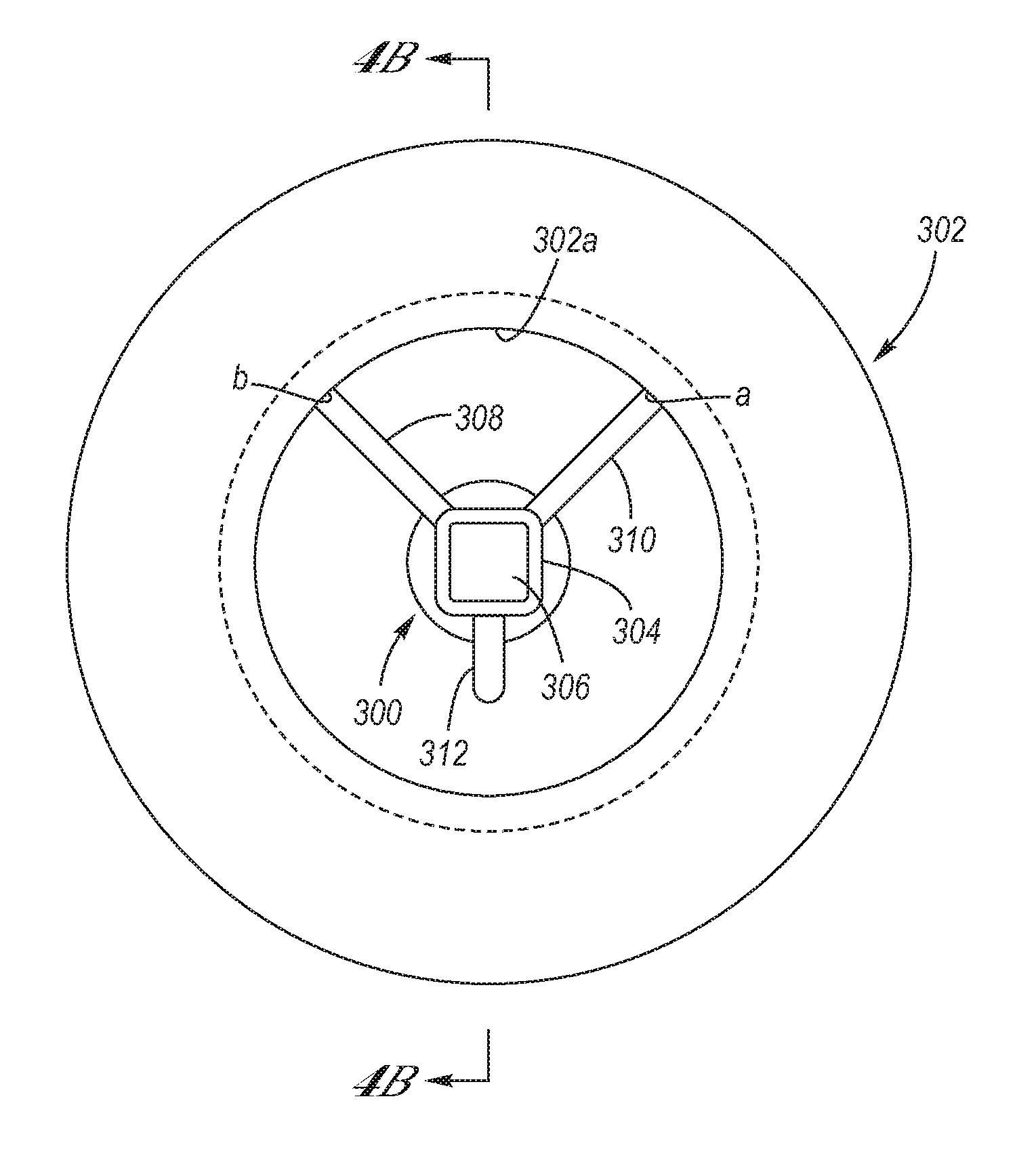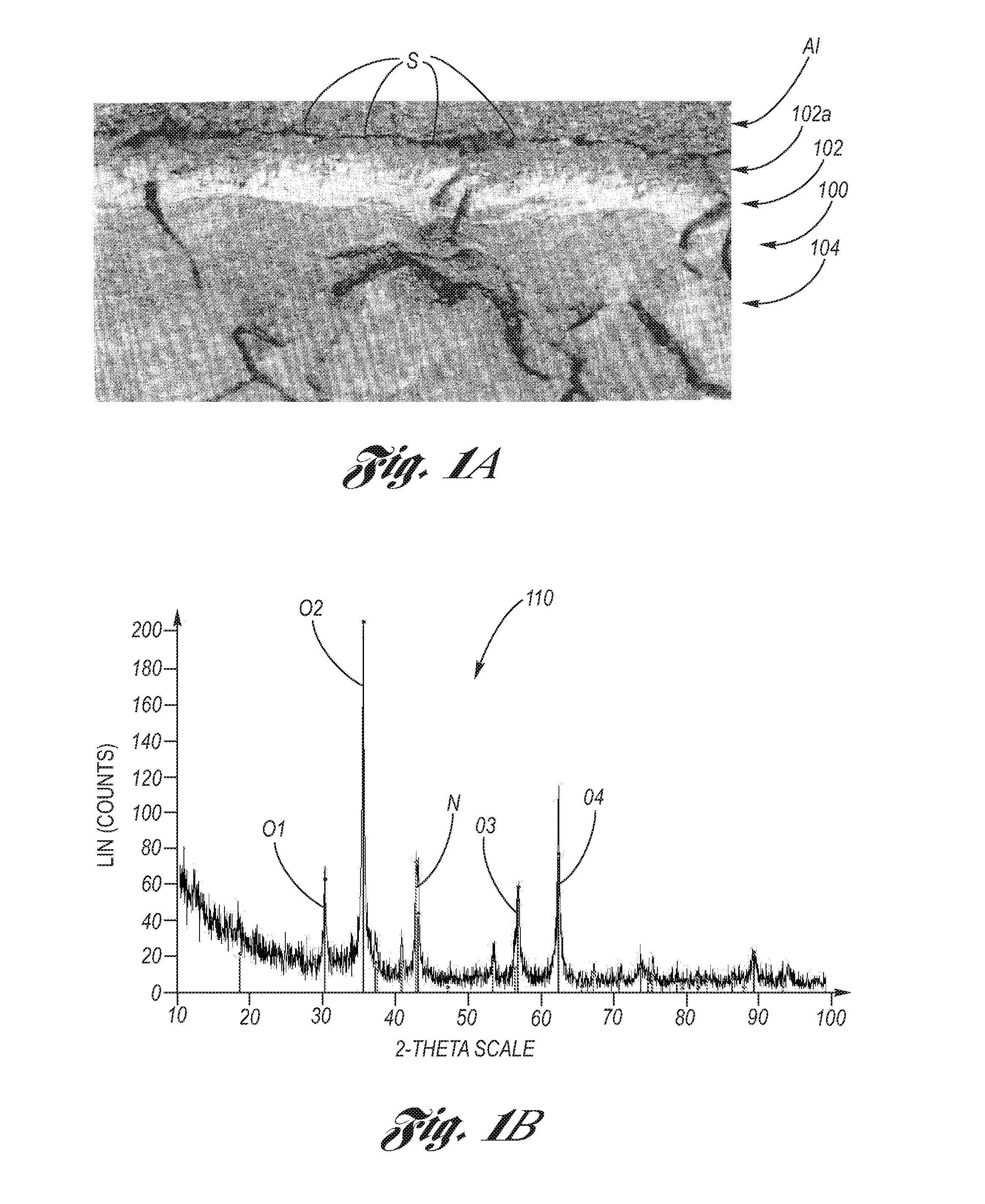Salt Bath Ferritic Nitrocarburizing of Brake Rotors
a technology of ferritic nitrocarburizing and brake rotors, which is applied in the direction of heat treatment apparatus, brake discs, manufacturing tools, etc., can solve the problems of surface corrosion, pedal pulsation or a corroded braking surface, high temperatures on the rotor cheek surfaces, etc., and achieve the absence of distortion of the case structure and provide oxidation resistance.
- Summary
- Abstract
- Description
- Claims
- Application Information
AI Technical Summary
Benefits of technology
Problems solved by technology
Method used
Image
Examples
Embodiment Construction
[0028]Referring now to the Drawing, FIGS. 1A through 5 depict an example of a two salt bath ferritic nitrocarburizing system (process and apparatus) for producing a ferritic nitrocarburized surface treatment of cast iron brake rotors. The following description of the preferred embodiments is merely exemplary in nature and is not intended to limit the invention, its applications, or its uses.
[0029]FIG. 1A shows a cross-section of the surface microstructure of a ferrous material 100, a pearlitic cast iron brake rotor, subjected to the salt bath ferritic nitrocarburizing process according to the present invention. This process initially introduces carbon and nitrogen simultaneously from a nitrocarburizing salt bath into the surface S of the ferrous material 100 (an aluminum foil Al which is shown is merely an artifact of the testing set-up, and it does not form a part of the ferrous material 100). Thereafter, the ferrous material 100 is treated in an oxidizing salt bath. This step of t...
PUM
| Property | Measurement | Unit |
|---|---|---|
| dwell time | aaaaa | aaaaa |
| dwell time | aaaaa | aaaaa |
| temperature | aaaaa | aaaaa |
Abstract
Description
Claims
Application Information
 Login to View More
Login to View More - R&D
- Intellectual Property
- Life Sciences
- Materials
- Tech Scout
- Unparalleled Data Quality
- Higher Quality Content
- 60% Fewer Hallucinations
Browse by: Latest US Patents, China's latest patents, Technical Efficacy Thesaurus, Application Domain, Technology Topic, Popular Technical Reports.
© 2025 PatSnap. All rights reserved.Legal|Privacy policy|Modern Slavery Act Transparency Statement|Sitemap|About US| Contact US: help@patsnap.com



